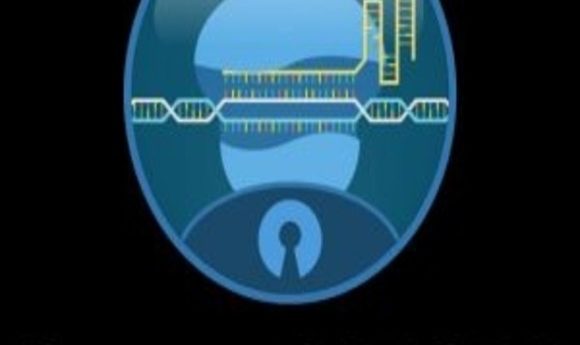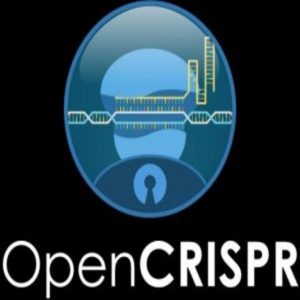EteRNA game shapes CRISPR solutions

Will an online video game help CRISPR researchers find a more reliable RNA off-switch?

A player logs on to the EteRNA website for the first time. As a newbie, she will spend her first few sessions learning the rules of this crowd-sourced online gaming interface. She will learn the various building tools available to her, gaining basic insights about how RNA folds in order to do its intricate and commanding job.
Over time, she will complete a variety of different puzzles—learning strategies to design the complex shape at the base of the RNA that will ultimately define how it binds and further interacts with DNA. She can even build upon others’ designs, learning from their triumphs and defeats and enter into live chat–based interactions about how to improve a solution. She will be able to iterate her designs across sessions and receive crucial feedback from a prolific team of RNA researchers.
And, now, she may also contribute a novel design that will help those same researchers develop a safe, reliable off-switch for a pioneering gene editing technique, just by joining the OpenCRISPR Challenge.
Human Intuition
Over the past few years, biologists and clinicians have put great stock in CRISPR/Cas9-based genome editing as a potential treatment for a wide variety of genetic diseases. Howard Chang from Stanford School of Medicine says it is a method that has great therapeutic promise—if scientists and clinicians can find a way to ensure that it is precise and well controlled.
“If you think about how medicine is prescribed now, you are given specific instructions—take this amount this many times a day for 2 weeks, and then stop. And that’s so there is control,” he explained. “In delivering CRISPR in experiments, we don’t have that kind of control. You put the system in and hope that you somehow got the right amount. And you don’t always have it. There’s been some work on the Cas protein to find that control, but our goal is to try to directly control the RNA, to guide that activity with a small molecule to gain it instead.”
Rhiju Das, a Stanford biochemist who studies RNA form and function, says the creation of such an off-switch could be a game changer. “There are currently treatments being envisioned to help cure auto-immune diseases by extracting a patient’s bone marrow, reprogramming it using CRISPR, and then putting it back into a patient,” he said. “But if you’ve got the first line test of a gene therapy, you have to be absolutely sure that any CRISPR molecules you’ve put in the marrow can be turned off when they are put back into the patient. Otherwise, you might end up doing more harm than good.”
That’s where EteRNA comes in. The game has been around since 2011, when Das and colleagues created it and first asked citizen scientists for help in modeling the different and quite diverse structures into which RNA molecules can fold.
“Our goal was to see if human intuition could maybe offer us something that our computational models could not,” he said. “Our lab, which specializes in RNA bio-engineering and structure modeling, was running into a whole bunch of questions at the time that we couldn’t answer—and our computer algorithms couldn’t either. And within a few months, we discovered that players were able to not only outperform the computers, but also us experts, at several interesting problems when they had access to experimental feedback.”
The Off Switch
Now, 6 years and approximately 200,000 registered users later, Das and Chang believe that EteRNA’s players may be able to create that much-needed viable RNA-controlled CRISPR off-switch because they’ve already performed so well with switch design challenges in the past.
“For the last few years, we’ve been synthesizing thousands of player solutions for a variety of different problems. Some of them involve small-molecule on/off switches not installed on CRISPR, but simple test RNA molecules,” said Das. “The players not only discovered some of those switches, they’ve also unearthed some interesting principles that we can generalize about how they might work. These switches are quite good. In fact, some might be better than the majority of the ones published in the scientific literature. So there’s an opportunity here for players to create efficient small molecular switches that will work with the CRISPR platform.”
Das and his colleagues launched the official challenge called OpenCRISPR in August 2017. With this game, EteRNA users can learn the basics of CRISPR controls and then design switches that fold the RNA hairpins needed to lock the process on or off. Players will receive feedback from Das and other researchers to help refine their designs while potentially creating switches with very sharp and deliberate responses. Ultimately, the researchers hope to get up to 94,000 solutions—and if they do, they will be tested in different research labs at Stanford, perhaps even in human cells.
“This kind of approach really is about the democratization of science. You can now reach a wider pool of talent that can help tackle some of these really complex problems,” Chang said. “These players know something that scientists don’t know yet, or at least can’t put into some sort of concrete rule that they can use and always implement. We can learn a lot from people who can solve these puzzles—and what we learn very well might help us better design patient therapies in the future.”